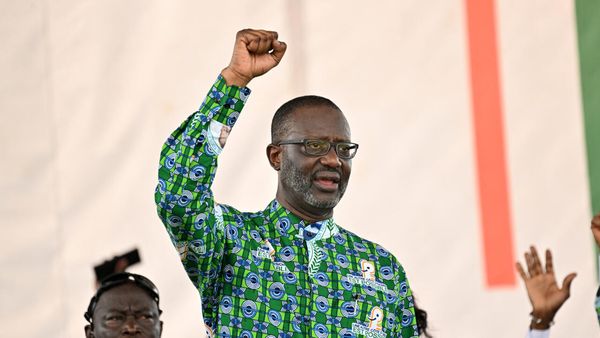
The tariff-induced market correction over the past week has made finding investment opportunities hidden among Barchart’s Bottom 100 Stocks to Buy difficult.
Not that it’s ever easy: most of the names are at the bottom because they lose lots of money. Further, Of the bottom 100, 80% are penny stocks trading at $5 or less. I last wrote about a bottom 100 stock in January when I wondered if B. Riley Financial (RILY) was uninvestable.
I concluded it wasn’t a stock for risk-averse investors, but aggressive punters willing to play options might consider the Jan. 15/2027 $10 call because there was more than two years of time decay for the embattled investment bank to right the ship.
Its share price has fallen 32% in the three months since, with the ask price down 36% to $1.24. In January, it was in the 81st spot in the bottom 100 stocks to buy; today, it is 51st. I still think it’s a possible play for aggressive investors.
But as I said, finding hidden gems in this sad-sack group of stocks is tough. Nonetheless, I will try.
Catching my eye is S&W Seed Company (SANW) in the 73rd spot, up 11 positions from Friday. Up isn’t good in this instance. Its weighted alpha is 83.09, almost double its loss of 45.62% over the past year.
The Colorado-based company is a leading producer of sorghum and alfalfa seeds. While the tariffs are bound to hurt it, I’ll consider why this bottom 100 stock might be something for aggressive investors to consider.
Like RILY, SANW is not for risk-averse investors.
What’s to Like About S&W Seed?
I’m not going to lie. There’s not much positive to hang your hat on.
In January, the company’s board announced a strategic review of its business to find some added value for its loyal shareholders. The options to be considered include an outright sale, a merger with a strategic partner, a recapitalization, or continuing its long-term strategic plan.
“S&W Seed continues to successfully execute on its long-term plan. Over the last year, S&W Seed has taken decisive actions to strengthen the Company, including by divesting S&W Seed Australia subsidiary and exclusively focusing on its core US-based sorghum and alfalfa operations,” stated Chairman Allan Willits in its Jan. 13 press release.
In July 2024, S&W’s Australian business entered into bankruptcy proceedings down under. By November, a voluntary plan of administration process for its Australian subsidiary was complete, and S&W was free to focus on its Americas business, specifically, its Double Team sorghum solutions and its biofuels joint venture with Shell (SHEL).
Now, I’ll be honest: I’m not even sure I understand what sorghum is, but Perplexity AI assures me that it’s a very popular cereal grain, almost as popular as rice, wheat, maize, and barley. My guess is you find it in beer. It turns out it’s popular for gluten-free beverages.
As you pour through its latest Q2 2024 financials, you’ll first notice that it loses money, like many of its bottom 100 peers. In the first six months of 2025, it lost $1.8 million on $5.08 million in revenue. The good news is that while revenues were down significantly, so were its quarterly losses.
The accumulated deficit on its balance sheet is $140.2 million. Its highest net income over the past decade was $14.4 million (fiscal 2023) on $73.5 million in revenue.
So, it would take a decade or more to erase that deficit even if it were to turn a consistent profit from 2025 onward.
Why Bother?
Two things are intriguing.
First, the company’s levered free cash flow in the trailing 12 months ended Dec. 31 was $26.6 million, according to S&P Global Market Intelligence, considerably higher than the -$5.2 million a year ago and the highest it’s been since March 2020, when it was $30.1 million.
In March 2020, its shares traded in the $40s, suggesting the situation at S&W Seed, while depressing at the moment, has potential light at the end of the tunnel. It could be a value play for risk-tolerant investors.
The second: it trades at 0.66x its tangible book value per share of $7.44. In March 2020, its P/TBV was 1.25x, double what it is today.
Further, from a balance sheet perspective, its net debt of $18.1 million at the end of Q2 2025 is the lowest it’s been in the past decade, which has to do with the hiving off of its Australian subsidiary.
It’s possible that it could also find a way to exit its joint venture with Shell, which is currently losing millions on declining revenue. Still, management comments suggest it has no intention of doing so.
With cash flow as good as it’s been in some time, it has the wiggle room to hang in there.
Bottom Line: It would help if there were options for SANW. However, it's not a likely scenario when you’ve got a market cap of just $11 million.
On a scale of one to 1o, 10 being very confident it can move higher in the next 12 months, I’d give it a six or seven.
But only for aggressive investors.







